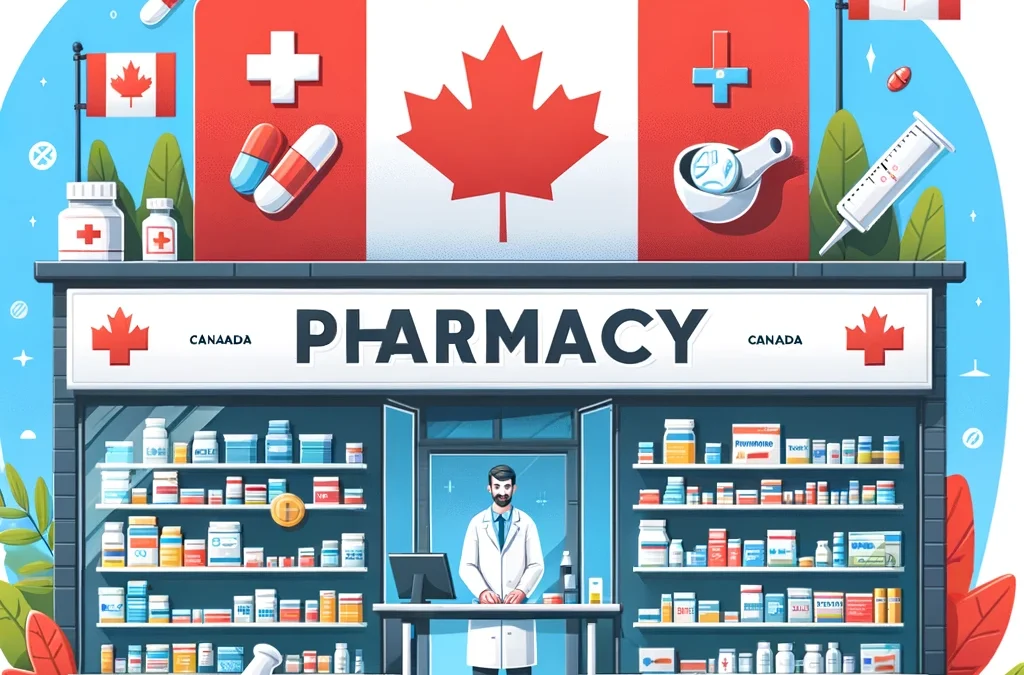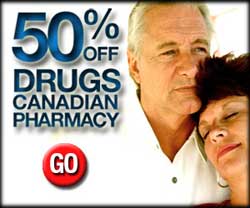Prescription Drug Price Inflation: Why U.S. Prices Are Skyrocketing and How Canadian Pharmacies Offer a Solution
Prescription drug prices in the U.S. have been a hot-button issue for years, with many consumers feeling the financial strain of rising medication costs. Despite attempts at reform, drug prices continue to climb, leaving many Americans struggling to afford life-saving medications. However, one solution that more and more U.S. consumers are turning to is purchasing prescription drugs from licensed Canadian pharmacies, where prices are often significantly lower.
This article will explore the reasons behind the skyrocketing drug prices in the U.S., the factors that drive these costs, and how Canadian pharmacies offer a safe and affordable alternative for consumers.
Why Are Prescription Drug Prices So High in the U.S.?
The U.S. pharmaceutical market operates differently from most other developed countries, particularly when it comes to pricing. Several factors contribute to the high cost of prescription drugs in the U.S.:
1. Lack of Government Regulation on Drug Prices
Unlike many other countries, including Canada, the U.S. government does not regulate drug prices. In Canada, the Patented Medicine Prices Review Board (PMPRB) sets limits on how much pharmaceutical companies can charge for medications. This government oversight helps ensure that drug prices remain affordable.
In contrast, U.S. pharmaceutical companies have the freedom to set their own prices without government interference. This allows drug manufacturers to charge as much as the market will bear, leading to substantial price increases over time.
2. Patent Monopolies and Delayed Generic Competition
When a pharmaceutical company develops a new drug, it is granted a patent that gives the company exclusive rights to sell the drug for a certain number of years—typically around 20 years. During this time, no other company can produce or sell a generic version of the drug, allowing the manufacturer to charge high prices without competition.
In addition to the standard patent period, many pharmaceutical companies engage in practices known as evergreening or pay-for-delay agreements. These strategies extend the patent life of a drug or delay the entry of generic competitors, further keeping prices high.
3. High Research and Development Costs
Pharmaceutical companies often justify high drug prices by citing the costs associated with research and development (R&D). It can take years and billions of dollars to bring a new drug to market, including costs for clinical trials, regulatory approval, and marketing. To recoup these expenses, companies set high prices for newly released drugs.
However, it’s worth noting that much of the early-stage R&D for new drugs is funded by government grants or academic institutions. Pharmaceutical companies primarily bear the costs of later-stage clinical trials and marketing.
4. Lack of Negotiation by Medicare
In many countries, the government or national healthcare system negotiates directly with drug manufacturers to secure lower prices for prescription medications. However, in the U.S., Medicare—the largest purchaser of prescription drugs—is legally prohibited from negotiating drug prices with pharmaceutical companies.
This lack of negotiation power allows drug prices to remain high, especially for Medicare recipients who rely on medications for chronic conditions.
5. Marketing and Advertising Expenses
The U.S. is one of only two countries (the other being New Zealand) that allows direct-to-consumer advertising of prescription drugs. Pharmaceutical companies spend billions of dollars each year on advertising and marketing to promote their medications to both consumers and healthcare providers. These costs are often passed on to consumers in the form of higher drug prices.
The Impact of High Drug Prices on U.S. Consumers
The consequences of high prescription drug prices are felt by millions of Americans, particularly those who are uninsured or underinsured. Some of the key impacts include:
- Financial Strain: Many individuals and families are forced to make difficult decisions about whether to pay for medications or other necessities like food, housing, and utilities. High out-of-pocket costs can lead to medical debt or even bankruptcy.
- Non-Adherence to Treatment: A significant number of patients in the U.S. report that they skip doses, ration their medications, or avoid filling prescriptions altogether due to high costs. This non-adherence can lead to worsening health outcomes, increased hospitalizations, and even death.
- Health Inequality: High drug prices disproportionately affect low-income and vulnerable populations, exacerbating health inequalities across the country. For those without access to affordable medications, managing chronic conditions becomes a major challenge.
How Canadian Pharmacies Offer a Solution
For U.S. consumers struggling with high drug prices, Canadian pharmacies present a safe, affordable, and legal alternative. Here’s how they provide a solution to the rising cost of prescription drugs in the U.S.:
1. Government-Regulated Pricing
One of the biggest advantages of purchasing medications from Canada is that the government regulates drug prices through the PMPRB. This regulatory body ensures that drug manufacturers cannot charge excessively high prices for medications, keeping costs manageable for consumers.
As a result, the same medications that are sold in the U.S. for hundreds or even thousands of dollars can be purchased from Canadian pharmacies for a fraction of the cost.
2. Availability of Affordable Generics
Generic drugs in Canada are widely available and highly regulated to ensure they meet the same safety and efficacy standards as their brand-name counterparts. Because Canadian pharmacies often prioritize offering generic versions of medications, U.S. consumers can access these drugs at significantly lower prices than in the U.S.
For example, popular medications like Lipitor (atorvastatin), used to lower cholesterol, and Crestor (rosuvastatin) can often be purchased in their generic forms from Canadian pharmacies for a fraction of what they cost in the U.S.
3. Access to the Same High-Quality Medications
Canadian pharmacies source their medications from the same reputable manufacturers as U.S. pharmacies. All medications sold by licensed Canadian pharmacies must be approved by Health Canada, ensuring they meet strict standards for safety, quality, and efficacy. This means that U.S. consumers can feel confident that the medications they purchase from Canada are just as safe and effective as those sold in the U.S.
4. No Need for Insurance
For U.S. consumers without health insurance or those with high-deductible plans, purchasing medications from Canadian pharmacies can be a more affordable option. In many cases, the out-of-pocket costs for medications from Canada are lower than the copays or deductibles required by U.S. insurance plans.
Additionally, because Medicare cannot negotiate drug prices, many seniors on Medicare find that purchasing medications from Canada is more affordable than filling prescriptions through their Medicare Part D plans.
5. Cross-Border Prescription Options
U.S. consumers can legally purchase prescription medications from licensed Canadian pharmacies for personal use, provided that the quantity does not exceed a 90-day supply. Many Canadian pharmacies offer convenient mail-order services, delivering medications directly to U.S. customers’ doors, often with free or low-cost shipping options.
How to Safely Purchase Medications from Canadian Pharmacies
While purchasing medications from Canadian pharmacies can be a cost-effective solution, it’s important to take precautions to ensure you’re buying from a reputable source. Here are a few tips to help you make safe purchases:
- Look for Certification: Only buy from Canadian pharmacies that are certified by the Canadian International Pharmacy Association (CIPA) or other regulatory bodies. These certifications ensure that the pharmacy is legitimate and adheres to Canadian regulations.
- Avoid Suspiciously Low Prices: If a price seems too good to be true, it probably is. Be wary of online pharmacies offering prices that are significantly lower than other reputable pharmacies, as they may be selling counterfeit or substandard medications.
- Check for Licensing: Legitimate Canadian pharmacies will require a valid prescription from a licensed healthcare provider. If a pharmacy offers to sell you prescription medications without a prescription, it is likely not legitimate.
- Read Reviews and Testimonials: Look for customer reviews and testimonials to ensure that the pharmacy has a good reputation for quality, safety, and customer service.
Conclusion
The rising cost of prescription drugs in the U.S. is a complex issue driven by a variety of factors, including the lack of government regulation, patent monopolies, and high marketing costs. For many U.S. consumers, these prices have become unsustainable, leading to financial hardship and non-adherence to treatment plans.
However, purchasing medications from licensed Canadian pharmacies offers a safe and affordable solution. With government-regulated pricing, access to high-quality generic drugs, and mail-order services that deliver medications directly to your door, Canadian pharmacies provide an effective way for U.S. consumers to save money on their prescription medications without compromising on safety or quality.
By taking advantage of this cross-border option, you can reduce your healthcare costs and ensure you receive the medications you need to maintain your health and well-being.




